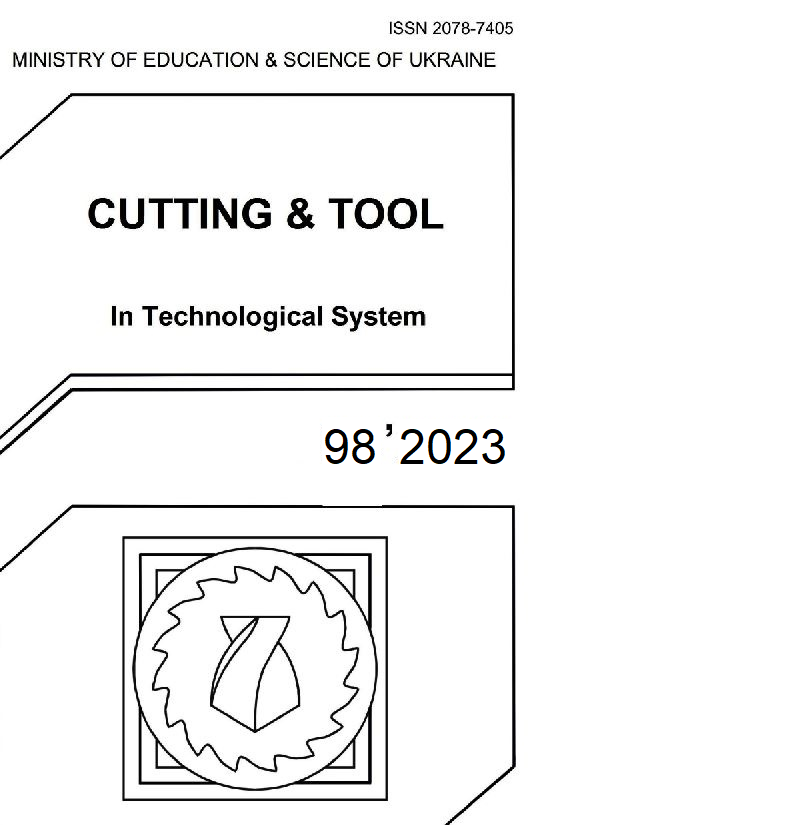INCREASING THE ACCURACY OF DEFECTOSCOPY BY THE METHOD OF ACTIVE THERMOGRAPHY OF PRODUCTS MADE OF NON-METALLIC HETEROGENEOUS MATERIALS AND USED IN ENGINEERING
DOI:
https://doi.org/10.20998/2078-7405.2023.98.10Keywords:
non-metallic heterogeneous materials, thermal control method, flaw detection, infrared equipmentAbstract
Nowadays, non-metallic heterogeneous materials are widely used in mechanical engineering, which is primarily due to their unique properties, such as strength, light weight, corrosion resistance, and high vibration, sound, and heat insulation characteristics. At the same time, non-destructive control methods that would allow to obtain the most complete picture of the defective state of products made of such materials are of great importance. The main task of the work is the development of optimal algorithms for determining each defect of a product made of non-metallic heterogeneous material with the establishment of its exact location, including the depth of occurrence, as well as its geometric parameters. The method of thermal non-destructive testing is considered promising. Studies of the accuracy of determining the parameters of defects in non-metallic heterogeneous materials by the specified method have been carried out.
References
Bezimyanniy Yu.G. Acoustic control of materials with a developed mesostructure Physico-chemical mechanics of materials - 2007. – No. 4. – pp. 53–65.
E.Yu. Gordienko, N.I. Glushchak, Yu.V. Fomenko, G.V. Shustakova, I.I. Dzeshulskaya, Yu.F. Ivanko Diagnostics of composite materials of aircraft elements by active thermography Nauka innov: 2018, 14(2). – pp. 39–50.
Vavilov V.P. Thermal control of aerospace products In the world of non-destructive testing. 2003. T20, No. 2. pp. 4–10.
Vavilov V.P. Infrared thermography and thermal control. Moscow: Spectrum. 2009. 544 p.
Maldague X.P. Theory and Practice of Infrared Technology for Nondestructive Testing. New-York: John Willey & sons, 2001. 682 p.
Oborskyi G.O., Levynskyi O.S., Holofieieva M.O. Study of the influence of the emissivity of materials on the accuracy of the thermal imaging control method Technological audit and reserves of production. – No. 2/3(28), 2016 – pp. 4–7.
Oborskyi G., Levynskyi O., Holofieieva M. The effect of surface observation angle on accuracy of non-contact temperature measurement method // Technological audit and reserves of production. – №1/2(33), 2017 – pp. 19–23.
Molnar, V., Sztankovics, I.: Analysis of Roughness Parameters Determining Tribological Properties in Hard Turned Surfaces, Hungarian Journal of Industry and Chemistry 49(2), pp. 77–84, 2021.
Gossorg, J. Infrared thermography. Basics. Technique. Application – M. : Mir, 1988 – 416 p.
Levynskyi O.S., Holofieieva M.O., Babich Yu.I. The influence of the observation angle on the accuracy of the thermal imaging method of measurement Measuring and computing equipment in technological processes, – No. 2(55), 2016. – pp. 51–54.
Downloads
Published
Issue
Section
License
Copyright Notice
Authors who publish with this Collection agree to the following terms:
1. Authors retain copyright and grant the Collection right of first publication with the work simultaneously licensed under a Creative Commons Attribution License that allows others to share the work with an acknowledgement of the work's authorship and initial publication in this Collection.
2. Authors are able to enter into separate, additional contractual arrangements for the non-exclusive distribution of the Collection's published version of the work (e.g., post it to an institutional repository or publish it in a book), with an acknowledgement of its initial publication in this Collection.
3. Authors are permitted and encouraged to post their work online (e.g., in institutional repositories or on their website) prior to and during the submission process, as it can lead to productive exchanges, as well as earlier and greater citation of published work.

